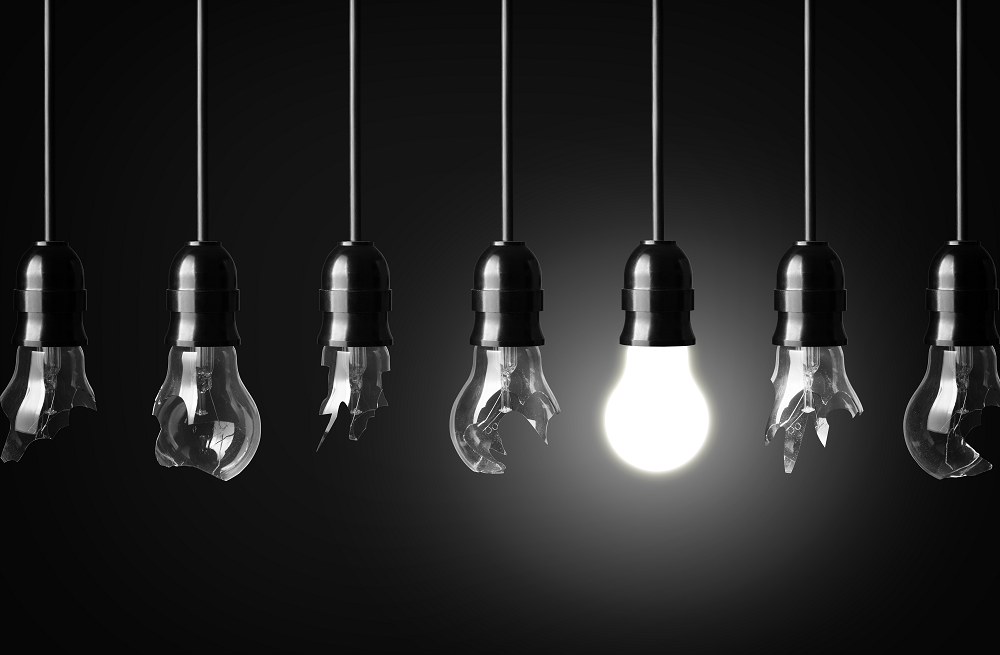Innovative product design: verify using a digital twin

Innovative product design in the world of smart products is more critical than ever to your success. Companies today are facing existential threats as smart products flood the market. The old way of doing business will no longer work, and if companies want to have a successful, profitable future, they need to embrace and perfect innovative product design for their smart products.
We’ve seen how smart product development requires a recipe: decide what to do, come up with ways to do it, and prove that it works. This process is very similar to the process one of the world’s most famous artists used in his work: Michelangelo.
We previously went over how to decide what to do in your product design process for smart products. Here, we’ll look at how companies can create a plan to overcome complexity and help them turn making smart products into an art.
Step 2: Come up with the ways to do it.
After Michelangelo figured out what his plan for painting the Sistine Chapel would entail, the next hurdle he had to overcome was figuring out how to actually paint his grand vision.
One problem was that the ceiling was 18 meters (59 feet) off the ground. To solve this, Michelangelo planned his own design for the scaffolding, which wasn’t on the ground: it was anchored into holes in the wall.
Next, he had to learn how to do the actual painting. Michelangelo was a sculptor, not a painter. To help himself out, he brought in other experts to work out the methods of how to paint the fresco.
This idea of shared expertise is critical to innovative product design and is something companies developing smart products can use, because the tools and processes they use will be critical to their success or failure. Realistically, this may not be the first time companies have developed something with electronics, or perhaps even something with software. But when they did it, all of these things were probably disconnected. The mechanical guys didn’t speak often enough to the electrical guys. The software guys had a completely separate lifecycle from the rest of the product.
Things probably didn’t work right the first time, and there were a lot of issues and rework that disconnect caused. To get it right, and get it right early, companies need to do this in a way that starts integrated, and stays integrated, so they can avoid these problems.
Step 3: Prove that your product is good.
After learning from his friends, Michelangelo was off and painting. He had his plan, he knew how to execute it and he had his tools in place. Everything was good, right? Not exactly.
Not long after he had begun, Michelangelo noticed that mold was beginning to grow on the painting because the plaster was too damp.
How was he going to overcome this hurdle? His assistant worked on it, and together, they came up with a new recipe for the plaster that would require less moisture and be far less susceptible to mold. This recipe would become a common practice throughout the rest of the fresco world.
The unfortunate thing was, Michelangelo had to scrap all of his work and start over.
This brings us to the third step in our recipe: prove that it works. Michelangelo could have thought ahead about the possible failures and planned ahead for them, and the same idea applies to companies developing smart products.

As part of innovative product design for smart products, companies need to anticipate where potential failures could happen. What are some common issues you typically run into? What might go wrong with communication between the systems? If Michelangelo had developed some tests to make sure his painting methods would work, he could have potentially avoided a lot of rework – and you can, too.
For companies making smart products, the most effective way to know your products work is to use digital tools to ensure the products are likely to succeed.
With digital tools, you can accurately predict how much it costs to make your product. You can analyze the materials being used, the manufacturing steps and processes, the locations for where you will build your products and which machines and tools you’ll use. With all of this information, digital tools can offer extremely detailed, accurate estimates to help you remain on budget.
Companies can also use digital tools to help us remain on schedule, keeping track of the program timelines, milestones and deliverables to make sure you deliver these products faster and faster.
Anticipate potential failures, and prevent them
Even if you’re on budget and on time, how do you know the product won’t fail?
Complex products are ripe for problems. There are so many different things working together, and there are many, many points throughout innovative product design and production parts of the process where things can break.
Digital tools can also help you avoid this issue. You’ve probably heard a lot about the digital twin. With the digital twin, you can incorporate all the information you know about the product with regards to how it’s developed, how it should work, how it should behave and everything else you’ve developed based on the plan you created. With all of this information, you can begin to simulate your holistic product to prove that it works as expected.
Imagine how helpful this information would have been when Michelangelo was progressing with his work. Pope Julius II would often visit Michelangelo to check on the project’s progress; he was anxious to show off the work. But when Michelangelo was roughly halfway through, the pope decided to show the incomplete paintings to the public and ordered Michelangelo to take down the scaffolding.
“I’m not finished yet,” Michelangelo protested. But Pope Julius II had his own threat: “Take down the scaffolding or I will have you thrown off of it.” The feeling of the race against time or risk death was very real for Michelangelo.
So, what were the results when the public got to see the Sistine Chapel in progress? Word spread that these were the greatest paintings anybody had ever seen. When the ceiling was done two years later, Michelangelo’s work set the bar for frescos: his styles and methods influenced much of the fresco work that came after for centuries.
Can you think of any products that we can say the same thing about? I bet you can.
The companies developing smart products are in the same position Michelangelo was in. The pressure is on to develop and release more complex products, and to do it faster than ever before.
If they don’t, they might not be thrown off the scaffolding. But they can certainly lose to their faster competition.

This concludes our series on the art of the smart product.
About the author
Bill Lewis is the director of product marketing for Teamcenter. Bill has spent more than 20 years working with companies in multiple industries to help them solve product development challenges with PLM.


